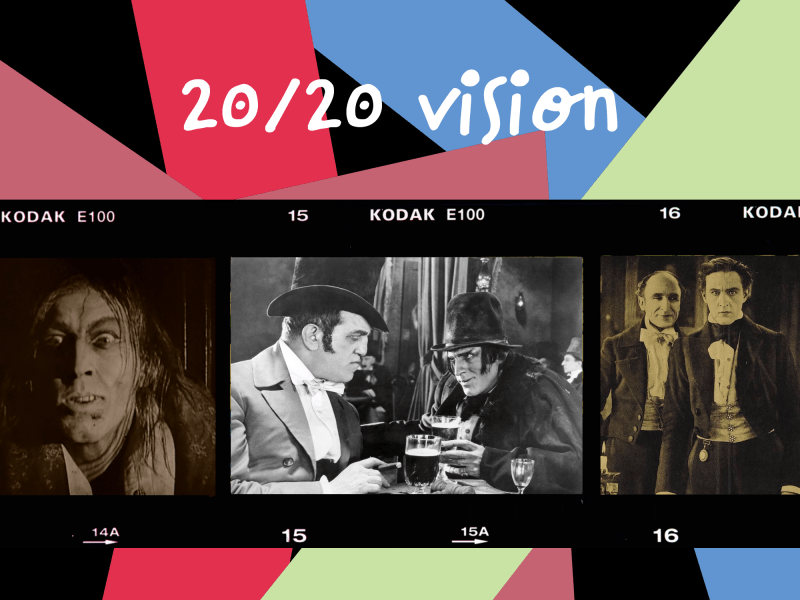The column “20/20 Vision” examines films from the 1920s through a 2020s lens. Writer Anthony Martinez Rosales looks at the intricacies of the films from the perspective of culture, medium and quality.
“Dr. Jekyll and Mr. Hyde” (1920) proves that good horror movies can be scary without jump-scares.
This film terrified audiences when it first came out in 1920, and it continues to do so 100 years later. Given the constraints of the medium at that time — limited visual effects, no color and no sound — the longevity of the film is impressive.
The story of “Dr. Jekyll and Mr. Hyde” is a classic tale of the human condition and the battle of our conscience — the evil versus the good. Dr. Jekyll (played by John Barrymore) is a doctor who provides medical care to London’s poor. After being aroused by a girl at a music hall, he begins pursuing the idea of splitting his personality into two, which would allow his good and sinful personalities to coexist.
He thus creates a potion that allows him to turn into Mr. Hyde. Being in this persona allows him to give into his devious desires. What follows is a film depicting the consequences of the protagonist giving into sin, as Dr. Jekyll loses control over Mr. Hyde, who commits murder and child abuse.
I first watched this film in the 6th grade with my English class. The film, in retrospect, was definitely not appropriate for a 6th grader to watch. I remember trembling when I saw Dr. Jekyll’s transformation into Mr. Hyde, and I had to look away when the murder scenes came up. By the end of the movie, half of the class was crying, and my English teacher had to send out an email apology.
Revisiting this film, I can see why 6th grade me was scared. Sure, this film won’t make you jump like “Insidious” (2010) or “It“ (2017), but both of those films rely heavily on modern, advanced visual effects and sound design. A hundred years ago, “Dr. Jekyll and Mr. Hyde” didn’t have these at its disposal. Instead, the film’s horror depends solely on the actor’s performances, limited effects and the audience’s imagination.
The film includes close-up shots of Mr. Hyde’s victims screaming. At times, an actor may scrunch up their eyebrows in a cartoon-like manner to display anger, or the camera would cut to a close-up of a child crying. These vividly showcase the consequences of Mr. Hyde’s actions.
The key performance is that of John Barrymore, who masterfully brings the two contrasting personas to life. Beyond wearing different costumes to embody Dr. Jekyll and Mr. Hyde, Barrymore convinces the audience of the persona switch by adopting different ways of moving. Instead of gently grabbing a beaker like Dr. Jekyll does, Mr. Hyde resorts to sudden jerks or outbursts of motion and an evil hunch. Some contemporary horror films need to re-learn the power of acting from Barrymore’s performance; it allows the audience to truly see the character.
The film also activates the audience’s imagination to make them emotionally invest in the story. In fact, it often had to restrain from explicitly showing the gore of the murder given motion picture regulations of the time. Therefore, the movie depicts these scenes through shadows or a screen black-out. Deferring the gore to the audience’s imagination makes it all the more eerie.
Today’s horror films, too, should similarly engage the audience’s minds and let them envision the horror themselves. Jordan Peele’s “Nope” (2022) replicates this tactic. The film leaves the audience with more questions than answers, such as why an alien came and what it wants to do. It’s the intrigue that keeps audience members tied to their seat in anticipation.
Other films, however, often resort to convoluted and bland storytelling because it is easier to tell than show. This can often look like compressed dialogue that does not add depth to the plot, or a shot being longer than needed to fill in gaps in storytelling.
In a period of limited film technologies, “Dr. Jekyll and Mr. Hyde” made creative use of practical effects to accomplish visual feats. The 1920s brought in new make-up techniques and prosthetics, both of which were heavily used by the crew of the film to make the friendly Dr. Jekyll’s transformation into the evil Mr. Hyde believable. Prosthetic overgrown fingernails, ugly sideburns, disheveled hair, wrinkled fake face skin — these convey Mr. Hyde’s brutal nature.
Contemporary films have access to more advanced make-up and practical effects, in addition to special effects technology such as Computer Generated Imagery (CGI). However, many contemporary horror films that rely only on CGI often create cheap-looking, unconvincing special effects.
“Dr. Jekyll and Mr. Hyde” showcases that physical effects — such as make-up and prosthetics — can be used creatively to enhance the credibility of an imagined scenario. Films like “X” (2022) continue to showcase their effectiveness. The movie successfully transformed actress Mia Goth into an elderly woman through the use of latex skin and make-up.
Overall, “Dr. Jekyll and Mr. Hyde” is a testament to how carefully crafted visuals, a captivating performance and a partnership with the audience can make a silent film feel alive and real. Contemporary cinema can take inspiration from it to leave viewers on the edge of their seats.
Editor’s Note: This article is a review and contains subjective thoughts, opinions and critiques.
